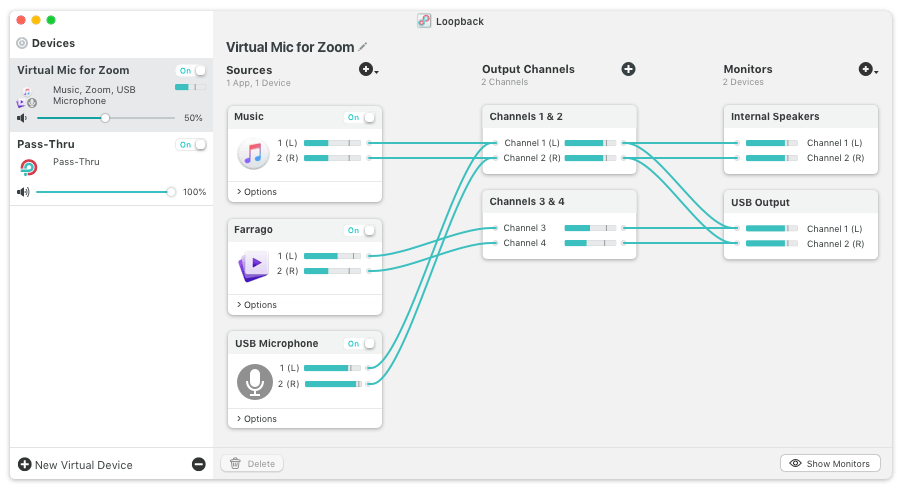

This is the hacker way to do it on the command line.
Audio loopback osx how to#
If you’re curious how to keep it permanent, let me know and I’ll post that. I don’t need the alias often even to require it to be permanent. This is not persistent – the alias will not survive a reboot. The Mac OS command (at least 10.6) to create an alias is: ifconfig lo0 alias 127.0.0.2Īnd to delete: ifconfig lo0 -alias 127.0.0.2

2 and then JBoss and Jetty place nice with each other. When you start up Jetty, you pass in the binding IP of. So the easier way is to just create a new IP or alias your localhost (127.0.0.1) into something like 127.0.0.2. The problem is JBoss opens up so many ports on a particular network adapter and trying to get JBoss and Jetty to share a single IP is a nightmare. Frequently I had multiple tiers of servers running – a Jetty instance running the web tier and a JBoss/EJB server doing the business tier behind it. For a limited time, it can be purchased at a special introductory price of $75.I do a lot of local web development on my MacBook Pro. While in trial mode, the quality of audio passing through Loopback’s virtual devices will be degraded after 10 minutes.

Audio loopback osx mac os x#
Loopback () requires Mac OS X 10.9 or higher, with a free fully-functional demo version available on the Rogue Amoeba site. If you want to record both your mic and the game audio while using a game capture device like those made by Elgato, Loopback can assist. ° Record gameplay videos: Making gameplay videos with great audio can be overly difficult. ° Live stream a podcast: Set a simple device (known as a pass-thru) as the output at the end of a chain in Audio Hijack, and then as the input source in Nicecast to live stream your podcast as you record. For easy recording in any app, combine multiple input devices into one virtual Loopback device with many channels. ° Combine multiple hardware devices: Audio apps like GarageBand, Logic, and Ableton Live only allow recording from a single audio device at a time. With Loopback’s help, those screen recorders can get audio from both the microphone and the application being filmed, so you get just the audio you want. Neither of these options tends to be ideal. ° Create screencasts: Screen recording tools like QuickTime Player tend to allow you to include either audio from a microphone or all the audio from your system. Your guests on Skype will hear both your voice and your sound effects and musical add-ons. ° Play audio to all podcast guests: Take audio from your physical microphone and combine it with audio sources like iTunes or QuickTime Player. Here are just a few examples of what Loopback can help you do: Loopback is a great tool for anyone working with audio on the Mac, from podcasters to gamers, Internet radio hosts to regular folks chatting via Skype. Loopback will capture audio from just one application, or a whole set of applications and devices, all with just a few clicks to configure. Select the Drift Correction checkbox for each. If all of the devices in the aggregate device aren’t synchronized through hardware, click the Clock Source pop-up menu, then choose the device with the most reliable clock. Loopback’s virtual audio devices will be instantly familiar to those who’ve previously used the open-source tool Soundflower, but there’s so more. In the Audio MIDI Setup app on your Mac, select the aggregate device in the list. In just a few clicks, you can easily pass audio directly between apps.
Audio loopback osx for mac os x#
Rogue Amoeba’s Loopback for Mac OS X is a tool for enabling audio routing between applications and audio devices on your Mac.


 0 kommentar(er)
0 kommentar(er)
